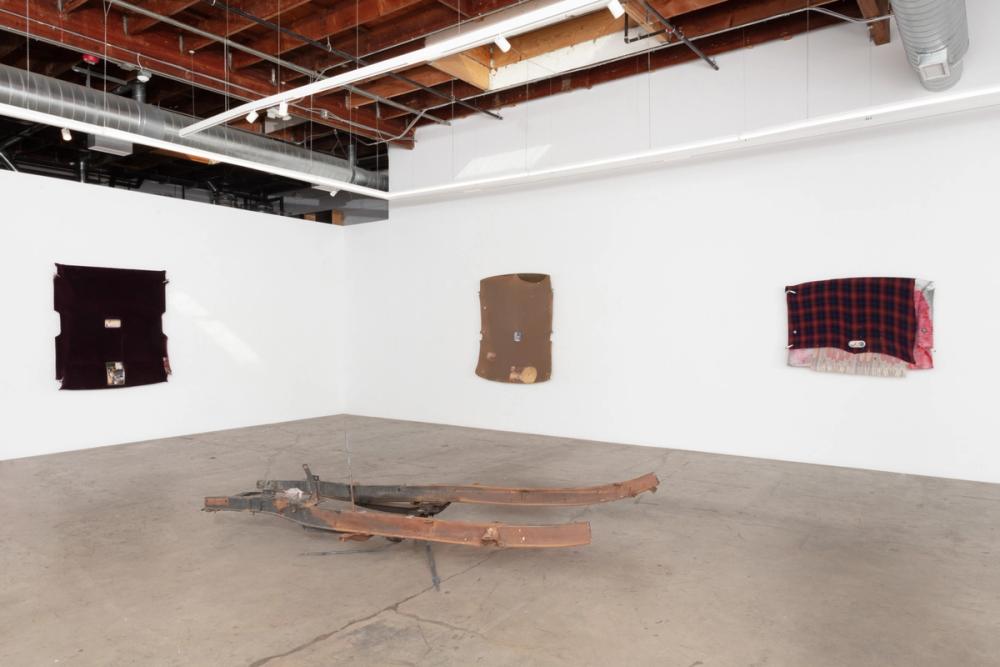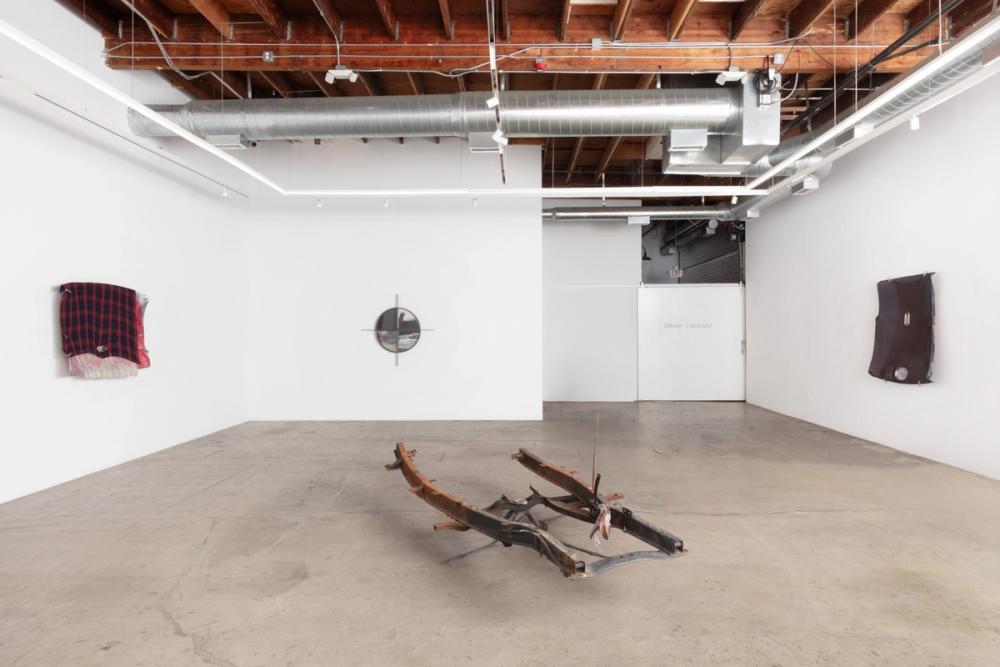Murmurs is pleased to present Pallbearer, the first solo exhibition in Los Angeles by artist Y. Malik Jalal.
J.G. Ballard, the British writer who is perhaps most (in)famous for Crash, his 1973 novel concerning car-crash fetishists, once described the automobile as “an iconic entity that combines... elements of speed, power, dream and freedom” through stylized designs that disguise “the inherent dangers of these violent and unstable machines.” In his previous sculptural works featuring automotive elements — found rubber car floor mats, stills from high-speed chase footage — Y. Malik Jalal has examined the fantasies of “speed, power... and freedom” described by Ballard while also indicating the potential violence of fatal collisions, police chases, and what the artist has called “the abject space of interstate highways.” In Pallbearer, Jalal continues dismantling and reassembling the American automobile — not only the array of cultural and aesthetic associations its image evokes, but the actual components that form and frame its interior.
Imagine you are sitting inside one such vehicle — in the cab of a truck, maybe, or the passenger seat of an SUV. Now look up. The panel installed above your head, covered with fabric and pre-fitted with apertures for interior lights, is called a headliner. In Jalal’s new works, headliners sourced from junkyards are refashioned as substrates for large-scale sculptural tableaux, wrapped and draped in velvet and other textiles that lend their surfaces a sensuous allure. In a conventional context, the headliner is weathered by daily wear within a car, and its fabric covering can begin to rip and sag, becoming an eyesore over time. Jalal says “a sagging headliner is an indication of a certain kind of struggle,” often a lack of access to the financial resources necessary for maintenance. By reorienting and inventively reupholstering these panels, he imagines the automotive interior as a psychological interior, the container of a richly textured psychodrama of memory and corroded sensation.
Like these repurposed junkyard materials, the images that appear in Jalal’s works also arrive through what he describes as “an economy of loss” — he purchases them secondhand on websites such as eBay, where they are likely available as the result of storage units being auctioned, family photographs being discarded, or some other act of dispossession. Inserted in the headliners’ prefabricated apertures, which function as closely cropped frames, the images show an assortment of anonymous Black figures in casual snapshots. Two women sit shoulder to shoulder in a domestic setting, one of them looking squarely at the camera; a grinning guitarist wearing golden pants performs onstage; two children, washed in a ghostly blur, stand in the open, cave-like mouth of a garage.
Beyond serving as evidence of motion, Jalal has compared the blur in some of these images to a veil, a reference which materializes in his swaddling of the headliners in fabric. The blurred images could serve as a shorthand for the function of photography in Jalal’s practice — the images show someone and something, but who and what? Writer and musician Jerome Ellis has said that Black people “live within the veil, and the veil is ever waving.” In Jalal’s hands, this veil is both an heirloom and a pall. Derived from the Latin word pallium (“cloak”), the pall in pallbearer refers not to the casket itself but to the cloth that covers it, an artifact of tender remembrance borne in the face of loss. Jalal’s Pallbearer raises questions about the possibilities of maintaining a psychic interior amid conditions of volatility and violence, suggesting that deliberate efforts toward repair and adornment provide some sense of security and sustenance — if only until you arrive at your next destination.


